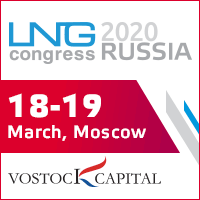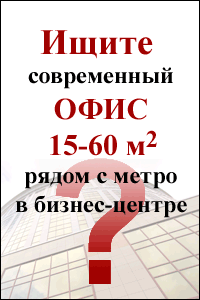Two ‘Streams’ from Russia: breaking down the old geopolitical structures

In the pre-crisis period, Russia supplied about 160bln cubic meters of gas to European countries, according to BP’s Statistical Review of World Energy. This is very important as this article is focused on the pre-crisis, stable period of gas supplies and consumption, the level that Europe will try to return to in the post-recession era.
"Considering the expected growth in demand for gas in Europe in the long-term perspective, Russia, according to the professional consultants, Wood Mackenzie, has the capability to control a third of the continental gas market."
Europe jittery over fears of lopsided dependence on Russia
Moscow’s plans to boost its presence on the continental gas market have initially caused fears and anxiety in some European countries over their possible excessive dependence on Kremlin for their energy needs. It needs to be noted here that the issue is not over Russia’s reliability as a partner. Even the recurrent transit problems in Ukraine and Belarus could not dent Moscow’s image of a trustworthy energy resources supplier due to the operative reactions taken to mitigate the negative consequences.
The problem is that Europe will require more oil and gas in conditions of growing energy deficit to sustain its economic growth, while the prospects for substituting traditional sources of energy with alternative or nuclear fuels in the long-term perspective are, at best, cloudy. In such conditions, the ability to control the flow and directions of export energy resources by any of the key players in the energy sector can be an effective method of exerting economic and political pressure on the other actors in the gas equation.
Two key issues have served to raise the ‘red light’ in European capitals. The first is Moscow’s strong aspiration to leverage its strong place in the global gas production industry to gain certain political goals. This stems directly from the Kremlin's energy strategy, which unequivocally states amongst others that “the global and political nature of the economic problems and influential position of the Russian energy sector in the global energy system have elevated the energy factor to the status of the basic elements of Russian foreign policies and diplomacy.” The second is Russia’s ongoing attempts to create some forms of supranational institutions for formulating and pursuing coordinated price and export policies among gas suppliers.
“Considering the expected growth in demand for gas in Europe in the long-term perspective, Russia, according to Wood Mackenzie, has the capability to control a third of the European gas market.”
However, despite the current apprehensions, there are, on the whole, substantial changes in views among major gas consumers in Europe, including in the UK, where political leaders have changed their positions on energy security. Today, the general notion that is increasingly gaining ground is that EU leaders no longer view the rather disproportionally significant share of Russian gas in the overall volume of energy consumption on the continental market as being lopsidedly dependent on Moscow, but as a source of guaranteed and stable source of energy supply to the continent.
Anti-Russia initiatives headed by the United States
But the United States has continued to see the issue of European energy security through the prism of its own national interests, which, amongst others, include the reduction of the EU dependence on Moscow for its energy needs.
It is characteristic that in spite of the conflicts in 2006 and 2009, the media, at the behest of the U.S. administration at the time, did not blame the transit states of Ukraine and Belarus, whose political and economic instability had caused the disruptions in shipment of Russian gas to its European consumers. Instead, they preferred to blame only Russia for the disruptions.
One of the outcomes of such anti-Russia views was the signing of a final document at the Energy Ministers’ Conference in Baku on Nov. 13, 2004, where EU and the Caspian oil and gas producing countries agreed to set up a single energy resources market. The so-called ‘Baku Initiative’ received further support at the Second Energy Ministers’ Conference in Astana on Nov. 30, 2006, where the summiteers signed an Energy Roadmap.
This document envisages setting up a transit corridor that will carry oil and gas directly via a system of pipelines from Caspian countries through the so-called South Caucasus route and bypass Russia on its way to the EU markets.
Moscow’s countermoves
 These events forced Moscow to speed up the developments of several new, large-scale transit projects to facilitate Russia’s gas supplies to Europe, whilst lessening its dependence on the political situations in Ukraine (as well as in Belarus). Specifically, the Kremlin is solving these two tasks via its Nord Stream and South Stream pipelines with projected shipment capacities of 55bln cubic meters and 63bln cubic meters, respectively.
These events forced Moscow to speed up the developments of several new, large-scale transit projects to facilitate Russia’s gas supplies to Europe, whilst lessening its dependence on the political situations in Ukraine (as well as in Belarus). Specifically, the Kremlin is solving these two tasks via its Nord Stream and South Stream pipelines with projected shipment capacities of 55bln cubic meters and 63bln cubic meters, respectively.
When finally launched, these two pipelines enable Russia to transport gas directly to Germany, its key strategic partner in Europe. Also, they, in conjunction with the Baltic Pipeline System, enable Moscow to significantly reduce its one-sided transit dependence on the political and economic situations in transiting countries. Similarly, they will reduce Russia’s bilateral economic interdependency on Eastern Europe, whilst making the latter more vulnerable in political and gas transactions with the Kremlin.
Specifically, the South Stream project was introduced to resolve some concrete challenges. First of all, it was launched to make the Nabucco project bypassing Russia more of a ‘white elephant,’ or at least, defer its realization to a farther date. This strategy will enable Moscow to win time to boost its economic and political influence in Central Asia and South Caucasus via strengthening its existing cooperation with gas exporting countries in these regions, notably, Turkmenistan, Kazakhstan, Uzbekistan and Azerbaijan. Second, it will enable Moscow to boost its economic, and later, political cooperation with Turkey by exploiting the latter’s ambition to run more self-sustained and active independent foreign policies in the region.
Ankara’s geopolitical ambitions can be accomplished only when backed by a strategic partner such as Russia as a counterweight to the United States and EU in the region. Similarly, such partnership with Ankara will also enable Russia to get a stronger foothold on the Turkish energy market and export gas to the Middle East and Mediterranean countries, primarily to Israel and Cyprus.
Competition with the Nabucco project
However, EU Energy Commissioner Andris Piebalgs does not see the South Stream project as an alternative to the Nabucco project as their combined total capacity will still be far less than Europe’s overall expected growth in demand for gas over the next decade. But Moscow has a different view on this issue, evident in the vigor with which Russia has insisted on the conclusion of binding long-term South Stream partnership agreements with Greece, Bulgaria, Romania and Hungary, as well as the level of concessions that it had to make, mostly on transit fares and shares in these projects allotted to the local companies in these regions.
Nabucco has always been a serious concern for Moscow, not only because it is an alternative to the Russian transit routes for the shipments of the Central Asian gas to Europe, but also because it will become a competitor in the procurement of gas from producing countries, whose resource bases are largely still understudied, and hence require an independent audit to verify their declared deposit reserves, and consequently, their claimed potential to boost their rates of export.
In general, to prevent the construction of alternative pipelines that will transport Central Asian gas to other markets, Russia should incorporate large volumes of gas produced in the region through long-term contracts with local producers; provide facilities for transiting the existing and future volumes of Central Asian gas to Europe, upgrade and boost its existing and lay new pipelines that will connect the oil fields in producing countries with its gas pipelines; offer gas producing companies attractive pricing, transit terms and conditions; bind the contracts with them with increase gas production in the region and finally expand its participation in the joint gas production and gas transportation projects.
“The ability of Russia, as one of the key energy suppliers, to control the flows and directions of its energy exports can be an effective method of exerting economic and political pressures on the other actors on the international gas markets.”
One of the first steps towards meeting these challenges was taken on Dec. 20, 2007, when Russia, Uzbekistan, Turkmenistan and Kazakhstan signed an agreement, which envisaged cooperation in the Caspian gas pipeline construction and defined the project development goals. Thus, under the project, Turkmengaz is obliged to supply Gazprom with 10bln cubic meters of gas per year, while Kazakhstan will supply Gazprom with 10bln cubic meters that will be gradually raised to 20bln cubic meters.
In addition, Russia plans to upgrade its Central Asia–Center gas pipeline by 12bln cubic meters to 62bln cubic meters per year. Thus, the combined capacity of the transiting system of Turkmenistan, Kazakhstan and Uzbekistan via Russia will amount to 92bln cubic meters per year. These facilities, according to industry experts, will be enough for Russia to fulfill both its existing commitments and as well the newly signed contracts on the transit of Central Asian gas to its consumers.
*The author is the deputy director of the Center for Political Studies at the Noravank Foundation in Armenia












 Web design,
Web design,